Prior to embarking on your diamond shopping journey, acquainting yourself with the vocabulary frequently used by jewelers to delineate popular diamond shapes is imperative. It's crucial to discern the disparity between "diamond shape" and "diamond cut," as these terms, though seemingly similar, pertain to distinct technical facets.
When jewelers discuss the shape of a diamond, they are alluding to the fundamental outline of the diamond when viewed face-up. Common diamond shapes encompass traditional outlines like rounds, squares, hearts, ovals, among others.
Conversely, the term diamond cut carries a much more precise connotation than diamond shape. It delineates the actual arrangement of facets on an individual stone. Essentially, this arrangement crafts the stone's shape and influences its brilliance (referred to as "brightness"), scintillation (or "sparkle"), and dispersion (or "fire"). Essentially, a well-cut diamond exudes radiance and sparkles with both black and white as well as vibrant flashes. Conversely, a poorly cut diamond appears dim and lacks vibrancy.
For most shoppers, attention typically gravitates towards the diamond's shape rather than its faceting. Notably, observing the faceting requires a close inspection of the stone, while a diamond's shape is instantly noticeable to everyone.
Now, having covered the terminology, let's delve into some of the prevailing trends in diamond engagement rings from the year 2023.
Round Diamonds
Undoubtedly, the most classic diamond shape for an engagement ring is the round, particularly the round brilliant-cut diamond. Year after year, the round diamond steadfastly retains its position as the most sought-after diamond shape for engagement rings. Remarkably, more than half of all engagement rings sold this year feature round diamonds as the primary stone. Our guide to round diamond engagement rings can assist in finding the finest options across various budgets. (It's noteworthy, however, that round diamonds typically command higher price-per-carat values compared to other cuts).
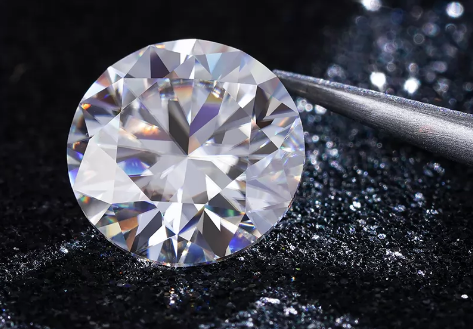
Princess-Cut Diamonds
Following closely in popularity is the square-shaped princess cut diamond. Despite square-shaped diamonds having historical roots dating back centuries, the princess cut itself emerged relatively recently in the engagement ring market. However, the specific number of facets and their arrangement lack standardization, imparting a unique character to these diamonds.
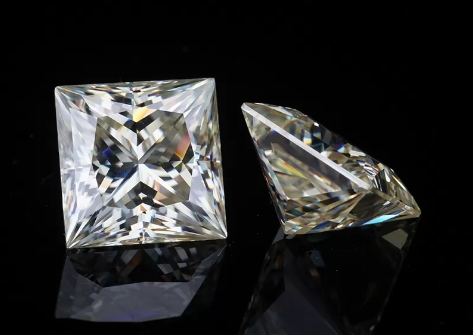
The popularity of princess cuts partly stems from their flat sides, facilitating easy setting of side stones adjacent to the central diamond. Moreover, they usually cost less than round brilliants of comparable carat and quality, as diamond cutters can retain a higher percentage of the rough diamond crystal when fashioning a princess cut.
Emerald-Cut Diamonds
Rectangular-shaped stones, such as emerald cuts, represent another favored option for diamond engagement rings. Unlike rounds and princess-cut squares, emerald cuts feature step-cut facets. Although emerald cuts exhibit less sparkle than rounds, they possess a distinctive elegance.
Nevertheless, the reduced sparkle of emerald cuts necessitates a different approach when shopping for this stone. Without the intricate scintillation of brilliant cuts, imperfections become more evident. Hence, the clarity grade of the stone assumes greater importance. Opt for "eye-clean" stones and aim for emerald-cut diamonds with clarity grades of VS2 or higher.
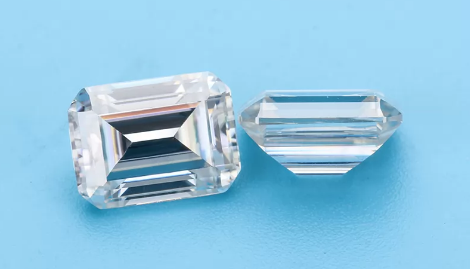
With their grace and sophistication, emerald-cut diamonds exhibit versatility, accommodating various jewelry styles—from geometric Art Deco to charming vintage designs, minimalist modern mountings, and forward-thinking futuristic aesthetics.
Cushion-Cut Diamonds
The cushion cut occupies a position between the square-shaped princess cut and the rectangular-shaped emerald cut. Originating in the 18th century, predating automated cutting techniques, this shape can feature either square or rectangular outlines.
What distinguishes cushions from squares and rectangles are their soft, rounded corners and often slightly sloped sides. Some aficionados liken the forgiving profile of cushion cuts to the shape of a pillow, hence their occasional reference as "pillow cuts." Similar to other brilliant-cut stones, cushions possess ample sparkle. A well-cut cushion is designed to showcase a diamond's dispersion or "fire" to its maximum potential.
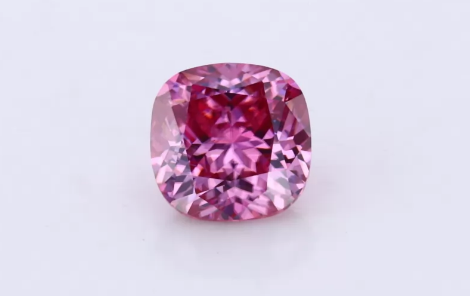
Over the centuries, cushion-cut diamonds have experienced fluctuations in popularity. Highly favored in the 19th century, they experienced a decline in the 20th century. However, in recent years, cushions have made a significant resurgence, emerging as a popular and reasonably priced option for modern engagement rings. Their gentle outlines make them ideal center stones for refined and understated rings, suitable for placement in halo mountings or stand-alone solitaire designs.
Asscher-Cut Diamonds
For those seeking a cleaner and more linear version of squares or rectangles, Asscher-cut diamonds present an intriguing option. Initially patented in the early 20th century, Asscher cuts boast long, geometric step-cut facets and precisely angled cut corners, imparting a distinctly tidy, bold, and contemporary appearance.
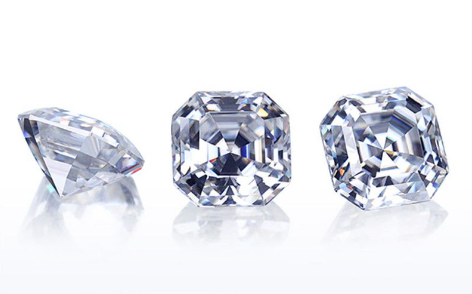
Marquise-Cut Diamonds
The marquise cut, another presently fashionable design, has witnessed fluctuations in popularity over the years. Conceived in the mid-18th century, the marquise cut, also known as a "navette" or "little boat," owes its name to its shape resembling a ship with a rounded middle and points at both ends. Marquise cuts can stand alone in solitaire settings or accompany various side stones of diverse shapes.
The elongated shape of a marquise cut renders it incredibly versatile. Wearing a marquise-cut diamond lengthwise creates an illusion of elongation and gracefulness in the finger's appearance. Conversely, wearing it in an East-to-West alignment generates a more modern, bold look. The marquise cut also serves as an excellent option for individuals seeking a diamond that makes a bold statement, appearing larger for its actual carat weight when compared to diamonds with other cuts.
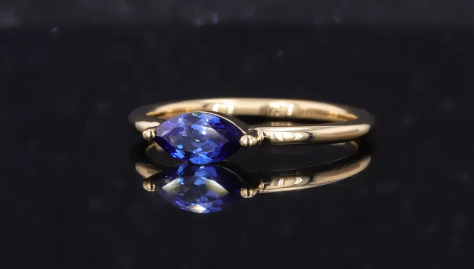
Given their pronounced geometric shape, symmetry holds paramount importance for marquise cuts. Look for stones with aligned points and equal curvature along the sides while avoiding poorly proportioned stones exhibiting a dark feature known as a "bowtie," resembling two dark triangles meeting in the stone's middle.
When selecting an engagement ring with a marquise center stone, opt for a protective setting, such as robust prongs, a bezel setting, or a halo, to safeguard the diamond's vulnerable tips.
Oval Diamonds
Thanks to several celebrity engagement rings, oval-shaped brilliant cuts have surged back into popularity. Essentially mirroring the profile of marquise-cut stones, ovals feature rounded tips instead of points.
In essence, ovals and marquises share several characteristics. Firstly, the elongated outlines of both shapes complement any finger gracefully. Moreover, akin to marquises, ovals represent a prudent choice for individuals desiring a visually impressive stone. When viewed face up, ovals appear larger than round diamonds of equivalent carat weight. Additionally, symmetry and proportions are critical factors for ovals. Poorly proportioned ovals may display bowties across their middles, albeit unlike marquises, some enthusiasts find these features aesthetically appealing in ovals.
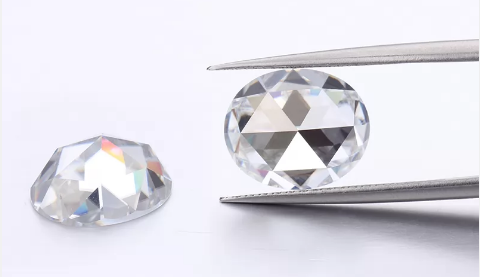
Regarding mounting ovals in engagement rings, they accommodate various styles. While exquisite solitaire options are readily available, those seeking a more impactful ring might explore creative avenues by pairing oval center stones with multiple side stones. A fusion of modern and vintage elements can be achieved, combining an oval diamond ring with thick bands adorned with striking colored stones, resulting in a visually captivating piece.
Pear Diamonds
In 2023, any enumeration of the most popular diamond shapes for engagement rings would be remiss without pear shapes. Once passé and even scorned in the 1990s by Carrie Bradshaw on Sex and the City, these stones with a vintage allure are experiencing a resurgence.
Often referred to as "tear drops," pears were initially cut in the 15th century and represent a hybrid shape between marquises and ovals. They possess a point at one end and a rounded curve at the other. While a pear has the potential to flatter the finger, the asymmetry of one point combined with a curve might present an odd appearance when worn. To ensure a pear has an elongating effect, select a stone whose outline mirrors the shape of the finger. Those with slender fingers should opt for slimmer pears, while individuals with thicker fingers should consider rounder pears.
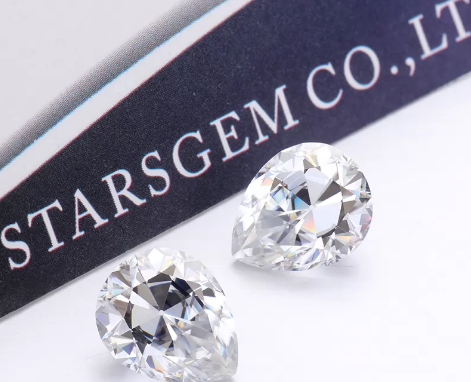
Numerous mounting options exist for pear shapes. Traditionally, pears are worn with the point facing away from the body towards the end of the finger. However, as they say, rules are meant to be broken! Alternatively, setting pears in an East-West orientation constitutes an appealing and unexpected choice. For a more unconventional appearance, opt for a ring encircling a pear in non-traditional halos. Those interested in three-stone or five-stone mountings can easily flank a central pear with smaller stones boasting unorthodox shapes. Bold individuals might opt for a pear set at an audacious angle.
Conclusion
The year 2023 has introduced an array of popular diamond shapes, catering to diverse preferences. From timeless rounds to the intricacies of fancy cuts, there exists a style and shape to suit every individual's taste.


 Lab Grown Emerald
Lab Grown Emerald








